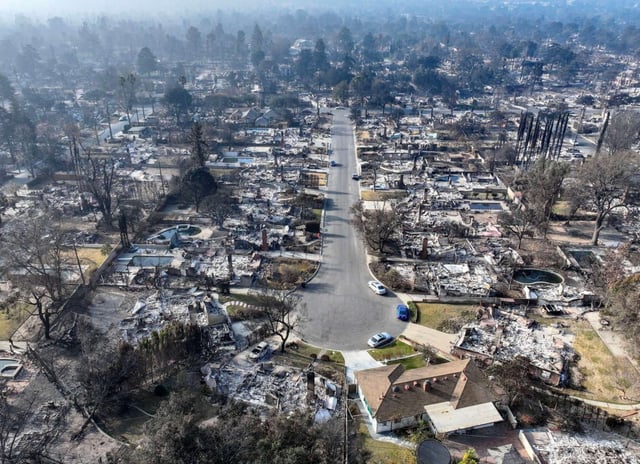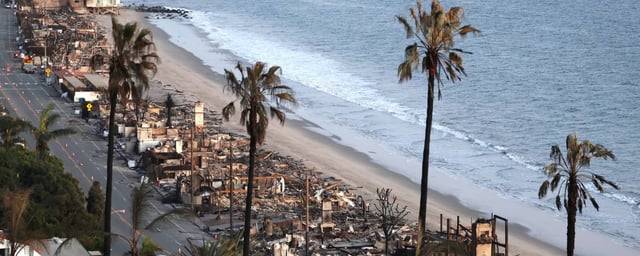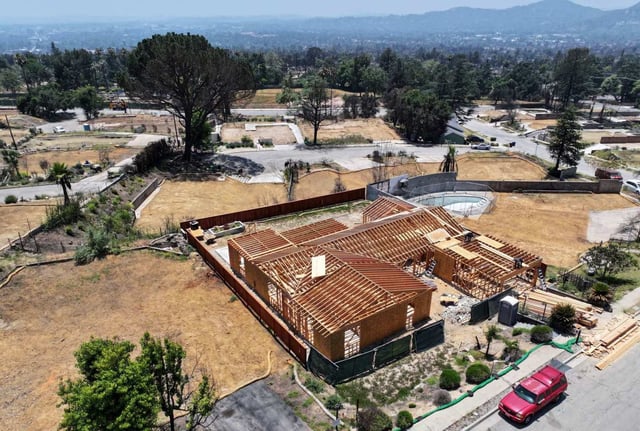Overview
- Federal crews have cleared 96% of private lots in the Eaton burn zone and 89% in the Pacific Palisades, approaching debris removal completion ahead of an August deadline.
- FEMA has approved $140 million in assistance for affected residents, including $45 million earmarked for housing support.
- Local authorities have issued dozens of expedited building permits by waiving select codes and fees to accelerate home reconstruction.
- Investigations continue into the fires’ origins, examining ember-driven reignition at Skull Rock and possible induction energization of decommissioned Tower 208 in Eaton Canyon.
- Plans are underway to bury power lines and upgrade water and utility systems to bolster future wildfire resilience in the hardest-hit communities.



